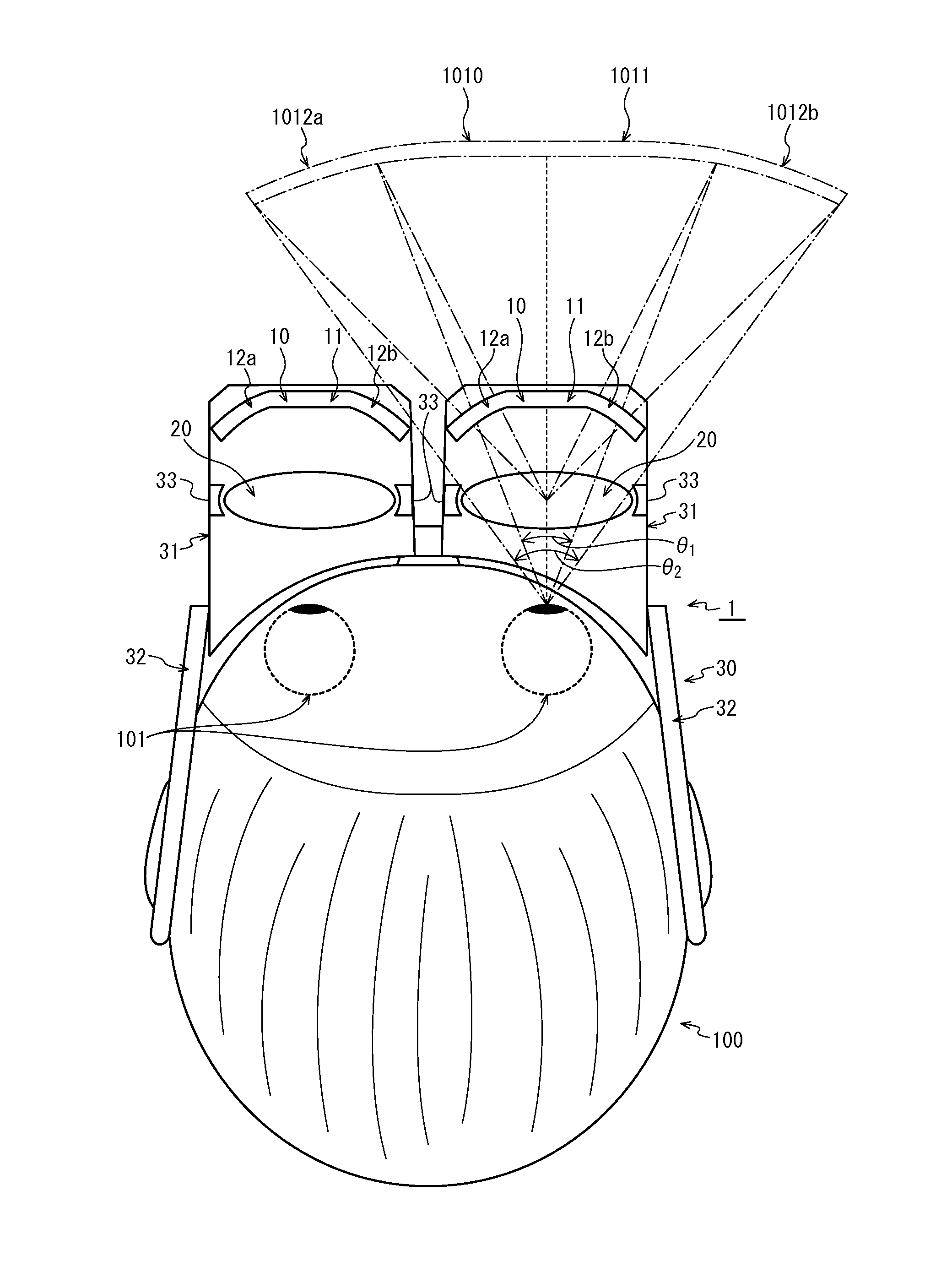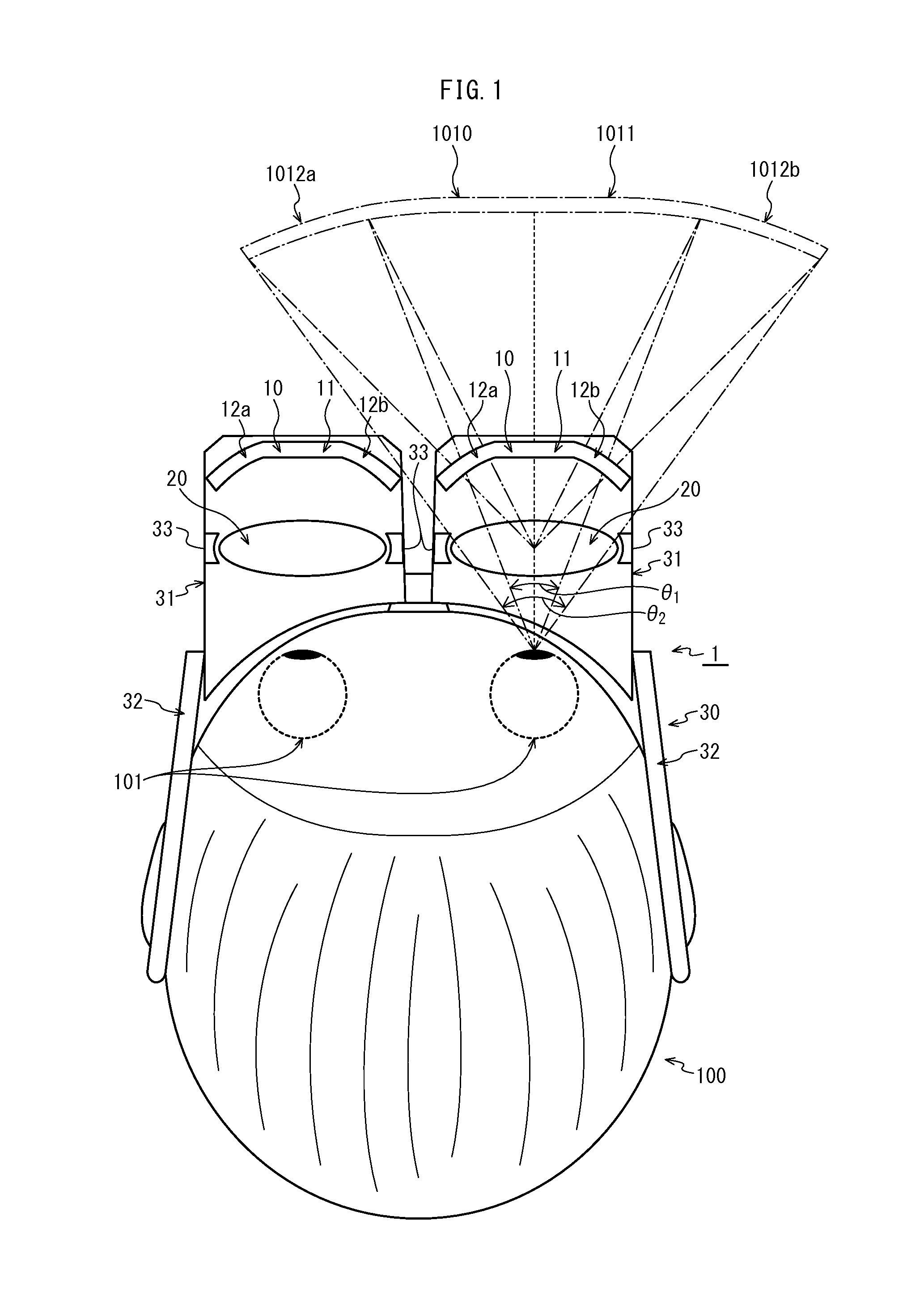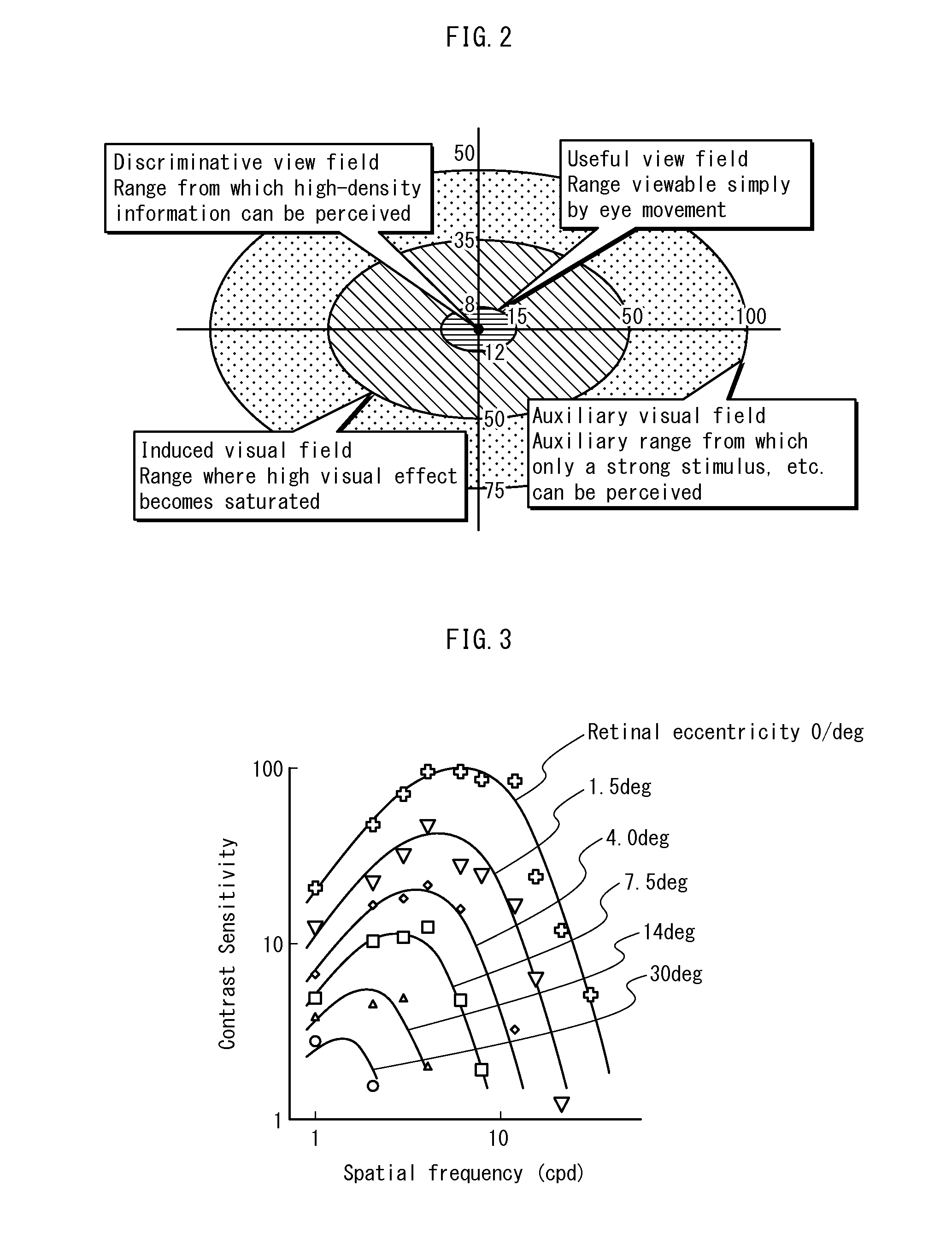Head-mounted display device
a display device and head-mounted technology, applied in the direction of static indicating devices, instruments, optics, etc., to achieve the effects of reducing the number of lenses that make up the eyepiece, improving yield, and easy processing
- Summary
- Abstract
- Description
- Claims
- Application Information
AI Technical Summary
Benefits of technology
Problems solved by technology
Method used
Image
Examples
embodiment 1
[0081]FIG. 1 shows the structure of a head-mounted display device 1 (hereinafter simply referred to as “display device 1”) pertaining to Embodiment 1. In particular, the optical system of the device is shown in this drawing.
[0082]The display device 1 includes an optical system including: an image display element 10 for displaying a two-dimensional image; and an eyepiece 20 located in front of the screen of the image display element 10, and magnifies an image displayed by the image display element 10 and projects a virtual image of the image into the air. The display device 1 also includes a holder 30 for holding the optical system and so on in front of the head 100 of the viewer. An eyeball 101 of the viewer sees, through the eyepiece 20, a magnified virtual image 1010 of the image displayed by the image display element 10. In the drawing, the magnified virtual image 1010 is projected to the location near the image display element 10 in order to simplify the drawing. In reality, how...
embodiment 2
[0153]FIG. 6 shows the structure of a head-mounted display device 2 pertaining to Embodiment 2.
[0154]The display device 2 has a similar structure to the display device as described above except that the eyepieces are not single lenses, and each eyepiece is composed of two lenses, namely a lens 20a for magnify and projecting an image displayed on the image display element 10 and a lens 20b for correction.
[0155]The lens 20b is not only used for correction of various kinds of aberration, but may also be used for correction of the visual acuity of each individual viewer. Therefore, the frame 33a supporting the lens 20b for correction is detachable. For example, the frame 33a is configured such that the lens 20b can be removed from the frame 33a by moving a frame support bar.
[0156]For example, the display device 1 pertaining to Embodiment 1 can correct myopia and hyperopia to a some extent by changing the positional relationship between the image display element 10 and the eyepieces 20. ...
embodiment 3
[0159]FIG. 7 shows the structure of a head-mounted display device 3 pertaining to Embodiment 3.
[0160]The display device 3 has a similar structure to the display device 1 except that the axis C of the optical system of the display device 3 is slanted downward with respect to the horizontal visual line H.
[0161]The horizontal visual line H represents a line that the viewer who is standing feels as being horizontal.
[0162]The following explains the effect obtained by slanting the optical system of the display device 3 downward.
[0163]In the human characteristics with respect to perception of information within the field of view shown in FIG. 2, the left range and the right range of the field of view of a human in the horizontal direction are equal, but the upper range and the lower range in the vertical direction are not equal. Specifically, within the useful visual field (i.e. the field covered by eye movement), the upper range is 8° and the lower range is 12°. Within the induced visual ...
PUM
 Login to View More
Login to View More Abstract
Description
Claims
Application Information
 Login to View More
Login to View More - R&D
- Intellectual Property
- Life Sciences
- Materials
- Tech Scout
- Unparalleled Data Quality
- Higher Quality Content
- 60% Fewer Hallucinations
Browse by: Latest US Patents, China's latest patents, Technical Efficacy Thesaurus, Application Domain, Technology Topic, Popular Technical Reports.
© 2025 PatSnap. All rights reserved.Legal|Privacy policy|Modern Slavery Act Transparency Statement|Sitemap|About US| Contact US: help@patsnap.com



